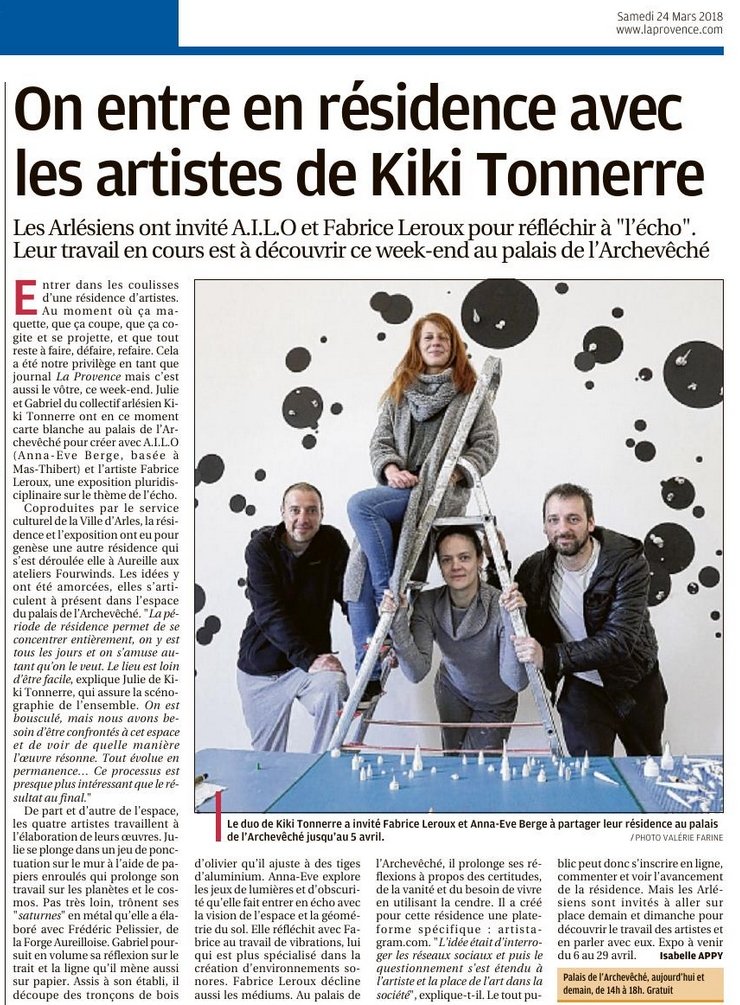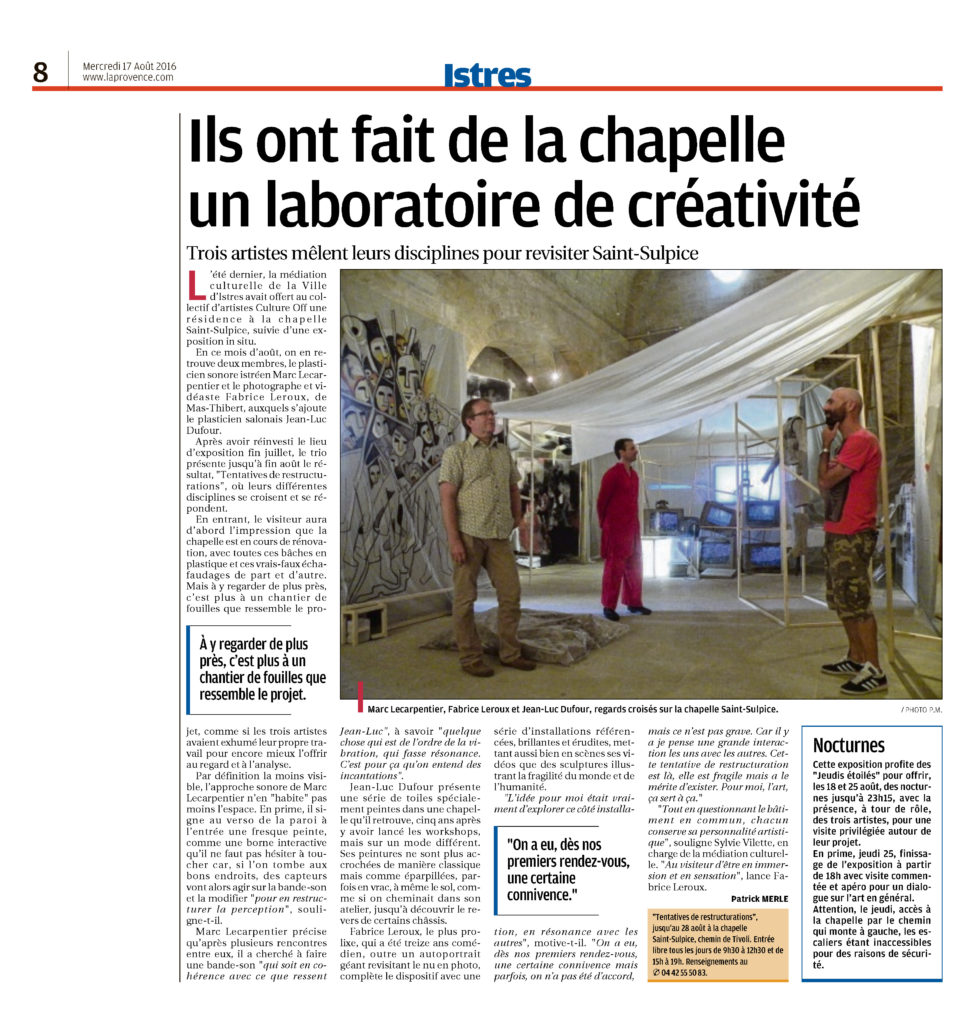Bio / CV / Texts
Why do I create?
Why do I create?
Because it allows me to say without saying
Because I am a poetry researcher
Parce que j’expérimente
Because it’s metaphysical
Because it’s organic
Because of memory
Because of time
Because of vanity
Because everything is linked
Because of the body
Because it’s an obsession
Because I’m not a rock star
Because of humour
Because I like sharing
Because I collaborate
Because I’m a geek
Because I like learning
Because it allows me to meet you
I have seen faults, weaknesses, fears, strengths.
Human being full of contradiction, sublime and exasperating
Revealing, from negative to development,
from shadow to light
Enlargement of the field of possibilities.
Biography
Several encounters/discoveries that were quite fundamental in his journey:
The discovery of the 17th century Vanities, the museum of resistance and deportation in Besançon.
These memories will not leave him.
A gift, an instamatic Kodak.
Discovering the Theatre that takes him out of his social environment is a love at first sight.
A simple meeting can change everything, turn a life upside down.
Self-taught, it is to seduce a young girl, that he opens a photo club in the secondary school, big success at the photo club, discovery of the laboratory, revelation of the magic of the enlarger, but a bitter failure with the young lady.
Certainly to overcome his fears, his shyness, he rushes into the theatre with bulimia, as an actor but also by observing scenographers and hanging out with technicians, light creators such as François Eric Valentin.
All this led him to the Co-creation of the Theatre La Manufacture des Abbesses in Paris. From a ruined building to the opening of a theatre.
Questioning determinism: whether it is social, horizontal, vertical, geographical, linguistic or philosophical.
This is about our free will.
"The man who thinks he's determined is hiding his responsibility."
Jean-Paul Sartre
Critical Texts
Ashes to Ashes by Mathieu Lelièvre
Ashes to ashes – Fabrice Leroux
(3’57’’, 2014)
Because this material survives physical or chemical operations, industrial transformations or manufacturing, the residue is of lower value. No product can be extracted from it, it cannot claim any interest. Because it is only a remnant, it is simply free to remain there, without disappearing or moving, just good at maintaining itself in the same state.
Fabrice Leroux decided to revalue this residue, which is a priori unimportant. Participating in its reappraisal, discovering and investing its material, transmitting its symbolic potential, as many avenues as the artist’s videos and photographs explore in order to convince us of its study, its resonance, its bodily presence. Since the residue remains, let us then focus on it, we seem to be told.
Ashes to ashes Ashes to Ashes wonders about our relationship to ashes. Residue of the corpse after extinction of the fire, of the body after the fire of life has been extinguished, ashes have no value, except the symbolic evocation of death. Fabrice Leroux associates this macabre reminder of the precarious nature of existence with the symbol of the eternal return, where the use of ashes in rituals is propitious to various and varied resurrections (placed on the moribund to alternate death and life in Christian monasteries, twin heroes transformed into ashes before resurrecting among the K’iche’ Maya, distributed at the top of a mountain to call for rain among the Muisca of Colombia, etc...) "Without fear or fatality", it is therefore a question of reactivating the living by ashes, by attributing a positive value to the residue, and thus extracting its dynamic potentials.
The video opens on a floor covered with ashes. In the distance, in the darkness of the abandoned place, a column of light emerges, closer to the murderer than to the window. In the air, the dust, light. Then, standing in front of the light, Cedranna begins her dance. All in spontaneity and freedom, she multiplies the trial and error of matter, the environment, her own body, just as she experiments with various throws of this powdery missile with which her flesh mixes. In her hands, these are grains that flow on the ground, when she does not turn round to meet them.
Undoubtedly because for Cedranna, this dance is propitious to play, where she gradually transforms her desires to deal with the performing material , where the propelled ashes suddenly like a weapon, then the next one to an hourglass, or even a dry earth to plough.
A closer look at the montage Ashes to ashes reveals that Ashes to Ashes is a matter of repetition, of back and forth, where by transversal operations the light moves in the same way as the dancer and the material, where the action is reproduced indefinitely, as if to support the cyclical nature of the elements staged. Fabrice Leroux cultivates the serial image just as Cedranna reactivates its rituals. And when the gesture stops, it is the sequence that is rewound, to bring up the ashes to heaven.
http://lelievremathieu-com.webnode.fr/news/fabrice-leroux-ashes-to-ashes/
Mathieu Lelièvre (Art Critic)
And we, bones, become ashes and powder by Simone Dompeyre
Performance : And we, bones, become ashes and powder
In the darkness of the early night, many of them, standing up, were waiting for a ceremony... no noise, when a young woman in her bubble-wrapped plastic and lace skirt made of hanging paper, wearing large rangers shoes, began her distribution, hands open with the same folded little papers. They hid words that were soon heard, in two voices, those of the two artists - in photography, sound, video, installation - Fabrice Leroux and - in dance - Cedranna, some of them could be heard on the wall that had become a big screen.
Ils disent «universel» et «souvenir», «visage» et «mèche», «vital» et «effacement», «lointain» et «morne» mais aussi «chaleur» et «froideur », «revers» et «naissance», «épanouissement» et «décomposition». Les mots reviennent lors du dernier mouvement ; ils égrènent les valeurs reconnues à la cendre, sans en refuser l’antinomie, ou en acceptant celle-ci : «tomber, perte, abandon » mais «embrasser, amour, réveil».
Having scattered the last of her messages on the ground, she walks toward a wooden platform covered with grey dust, the ash that Villon’s verse brings back to our bodies after life... Now in a simple tunic whose drapes were usually worn by those statues of young women / sleeping goddesses or lying goddesses, she dances.
The image is repeated in various dimensions, two monitors off stage and on this one enclose the body on their small screen, the large dimension on the wall exalts its delicacy, sometimes in the overlap of its remanence and gives it space and on the wood, the body advances, turns slowly, decomposes its steps, glissando... the body straightens up more strongly and throws, throws, propels or drops the ash that the hands pick up when it does not mix it - then on the wall, a zenith dive discovers the figures thus drawn. Certainly, some gestures lead to rituals of mourning and penance, and to the biblical works; for example, it is already the offended woman who is found guilty, in the Second Book of Samuel Tamar, daughter of David, spread ashes on her head and tore off her princess coat because her brother Ammon had raped her. The performance does not breathe such cruelty, it raises dust that has lost all heaviness and ugliness. She keeps in her walk this fire that smoulders under the ashes.
The dance is not sad, it represents this passage towards a state, light, filled wit harmony... a floating moment; it takes the place of other ERRING SHADOWS... And Barber’s score grants itself this moment of grace, this full moment, this moment of beauty. An elegy to a death that would neither be macabre, nor horrible that calls for funeral practices mixing ashes with food for the living - in South America - making Buddha statues by mixing them with clay - in Tibet-fertilizing the fields with it.
Si le titre est poésie de Villon, très loin de ses pendus dont «Pies, corbeaux (nous) ont crevé les yeux / Et arraché la barbe et les sourcils», la tonalité de l’œuvre ouvre un nouveau testament d’Orphée, où le poète serait devenu danseuse, où comme le phénix, il revient à la vie par sa combustion même. Le Poète traverse le miroir, la danseuse est attirée par le reflet.
Cette cendre coule comme eau quand elle s’en frotte le corps, s’en emplit le visage ; elle flotte comme air quand elle la souffle, la jette ; elle témoigne du feu quand la danseuse s’approche de cette colonne de lumière si étroite qu’elle se fait écho de portes vers un autre monde. La danseuse s’y avance, en recule, y revient happée par la lumière qui la fait illumination… qui la fait diaphane. La cendre garde la trace de ce qui fut la vie de l’humain… ce qu’augurait la rose qui, sur l’écran, devançait Cedranna. Rose et Éros, rose et souvenir, traces de vie ; elles se dispersent au vent et se répandent sur la terre ou se dissolvent dans l’eau, éphémère comme la fleur, éphémère comme cette performance dans la pénombre de la nuit « la douce nuit qui marche ».
Simone Dompeyre Artistic Director of the Festival TRAVERSE VIDEO



